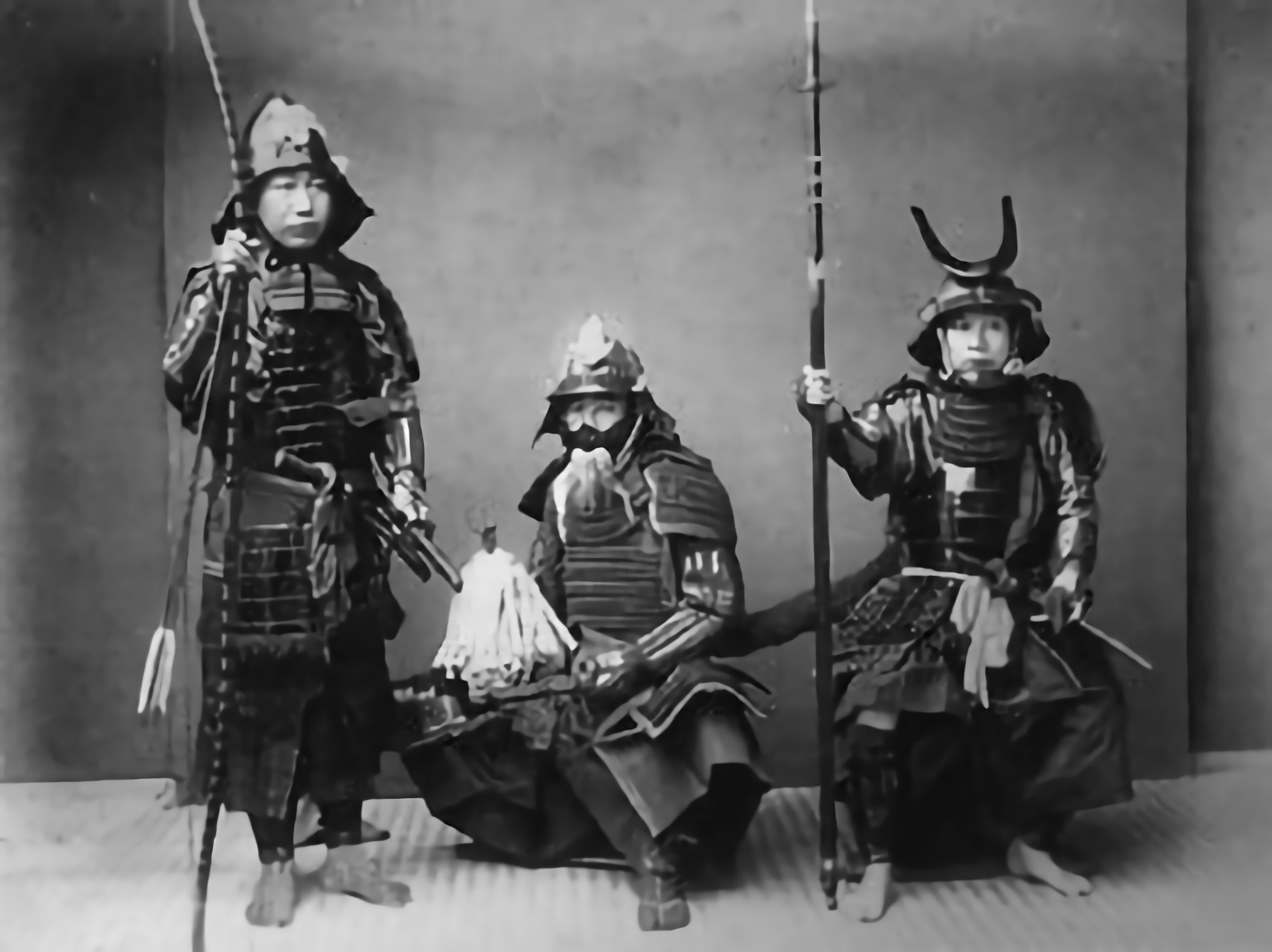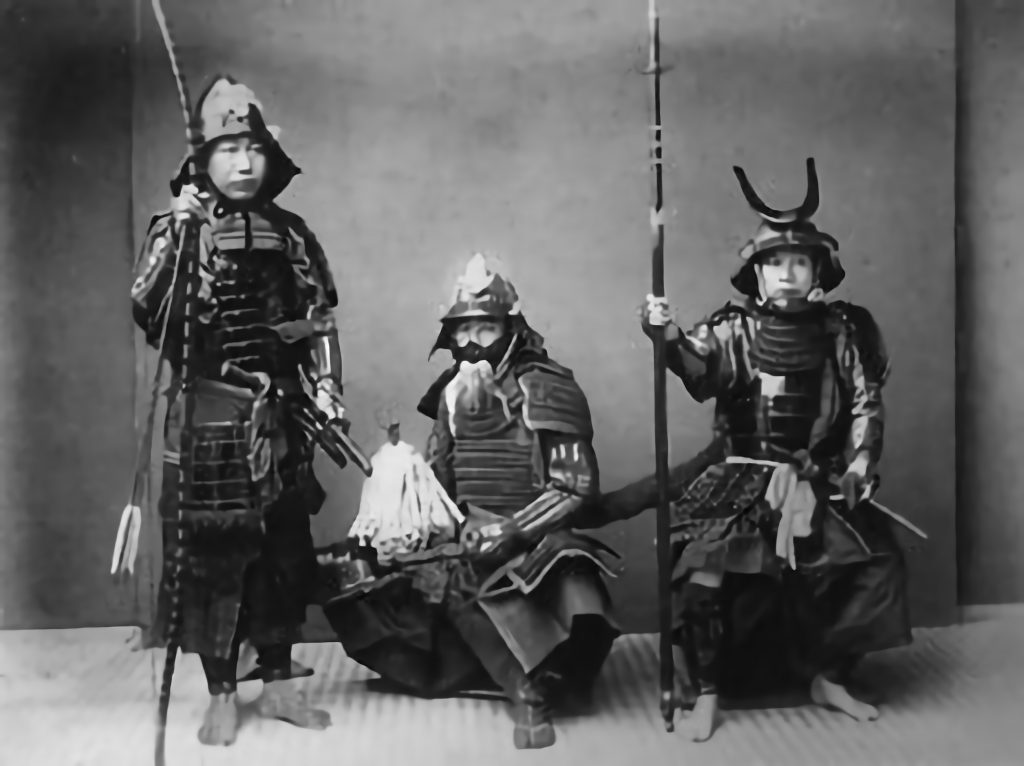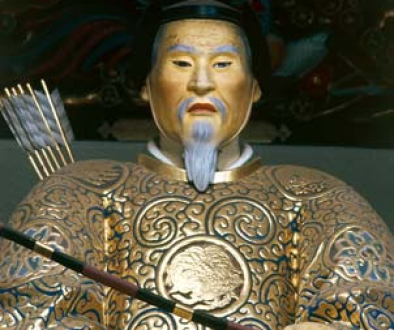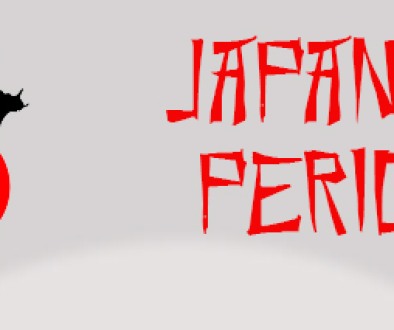Tokugawa Shogunate
The Tokugawa Shogunate was a feudal Japanese military government, which existed between 1600 and 1868. At the head of the government was the Shogun. All members are referred to as members of the Tokugawa clan, and these years became known as the Edo Period.
Following the Sengoku period, which was also known as the “Warring States period”, the central government model had been re-established by Oda Nobunaga during the Azuchi-Momoyama period. After 1600, and the Battle of Sekigahara, the central authority of the country fell to Tokugawa Ieyasu.

The difference in the hierarchy of society was strict during the Tokugawa period. The Daimyo, who were the lords, were at the top, followed by the warrior class of the Samurai. The other classes, farmers, and traders, all ranked below.
The Samurai and Daimyo were interlinked, with many Daimyo having been trained as Samurai, and sometimes smaller regions were ruled by Samurai. Even aspects of the Samurai warrior’s values became formalized into aspects of the Japanese feudal law.
Inherited lands were held by vassals, and they paid military service and homage to their lords. Provinces would have a degree of sovereignty and were allowed to run an independent administration of the han in exchange for their loyalty to the Shogun. It was agreed that the Shogun would be responsible for foreign relations as well as national security. The Shogun and lords were all Daimyo, who all held, policies, and land territories.
It didn’t matter what the political title of the Emperor was, it was the Shoguns of the Tokugawa that controlled Japan. It was the right of the Emperor to officially appoint a shogun, however, he had no say in state affairs. The Shogunate would appoint a liaison called the Kyoto Shoshidai. (Shogun’s representative in Kyoto) to handle the dealings with the Emperor.
Under Shogunate rule, foreign affairs and trade were tightly controlled. The main export of Japan was rice, and trade with “outsiders” was strictly controlled, to huge profits. From 1603 onwards, Japan relaxed its approach and sanctioned many shipping programs to trade with countries such as China and Korea. After 1635 came the introduction of the Seclusion laws, which meant that only ships inbound from China, Korea, and the Netherlands were allowed access to Japanese trading ports.
What is the Tokugawa Shogunate?
The Tokugawa period, also known as the Edo Period, is an era of Japanese history. It lasted from 1603 to 1868.
This period was characterized by two shoguns who were both named Tokugawa, Tokugawa Iemitsu and Tokugawa Yoshimune. The Edo government was the one in power during this time. After the shogunate became stable, they implemented a set of policies to keep peace and stability in Japan.
It was marked by the growing influence of Zen Buddhism, which was introduced to Japan during this time.
Japan underwent some major social changes during this time. Samurai had more power than they have ever had before. They established their own domains and had complete control of them. The farmers were reduced to serfs who owed labor and taxes to the samurai who owned them.
What Started Early Tokugawa Period?
Tokugawa Ieyasu, who is called “The founder of Modern Japan” by the Japanese. He was the most successful leader in the history of Japan and is widely considered to be one of the greatest military minds ever.
Tokugawa Ieyasu was born into a family that had been lords over Mikawa Province for many generations. He began his military career early but maintained a low profile while time passed with few incidents. It wasn’t until he met Toyotomi Hideyoshi (the most powerful lord in Japan at that time) that his life changed for the good.
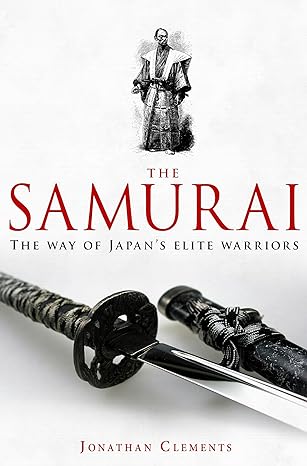
Tokugawa Ieyasu was born in 1543. He served Oda Nobunaga, one of the most influential figures in Japanese history, for 19 years. Tokugawa Ieyasu began consolidated power gradually until he had achieved hegemony over all of Japan. He is credited with creating the unification that lasted into the 19th century.
This period can be divided into two time periods: the first being the early Edo Period and the latter being the late Edo Period. The first period began with Ieyasu Tokugawa’s rise to power after years of civil war, and it ended in 1615 with his death. In this time period, Japan saw a lot of rebuilding and changes in society as trade restrictions were imposed, Christianity was outlawed, and Japan closed off its borders. The second period saw Iemitsu Tokugawa’s rise to power when he became a shogun in 1623.

What was the Economic Structure of Early Tokugawa Period?
The Tokugawa period was a time of peace and stability. There were no significant wars, and as a result, this period had a very stable economic structure.
The Feudal system was the governing economic structure of this era. This system is based on the existence of lords and vassals that were heavily dependent on the land they owned to generate an income. The lords would trade with other feudal lords in order to keep their economy active.
Tokugawa’s Religious Policies and Their Effects on Japanese Culture
The Tokugawa shogunate was a feudal system in Japan. Its policies and leadership had a great effect on the culture and society of the time.
Its rule was characterized by stability and isolationism. This gave way to a period of peace, known as the Edo Period, which lasted for over 250 years. The shogunate also promoted Confucian values through its so-called “closed country” policy. The Confucian ideals were meant to promote social stability, economic development, and national security throughout Japan, but they also had an adverse effect on Japanese culture because they limited outside influences.
The religious policies that Tokugawa enacted had deep consequences for Japanese society as well because they promoted Confucian ideals while restricting other religions from entering the country
The Battle of Sekigahara and its Consequences for Japan
This battle was a major battle of the late 16th century initially between two clans, the Takeda and the Uesugi. The Battle of Sekigahara is considered to be one of the most important battles in Japanese history.
This battle is significant for a number of reasons. It marked the end of over 100 years of civil wars that were fought among major clans in Japan from 1467 to 1598 and were also a critical event in Japanese history for ending a long period of military rule by shoguns and samurai class.
Why was Japan so Peaceful under the Tokugawa Shogunate?
Japan had been invaded by Europeans and invaded by other Asian empires before. Japan developed a culture of peace to protect itself from future invasions, as well as to save its inhabitants from the burden of constant war.
Tokugawa shogunate was a period of peace in Japan. This would not have been possible without the shogunate’s isolationist foreign policy, which made it difficult for foreigners to enter the country and trade with Japanese people.
